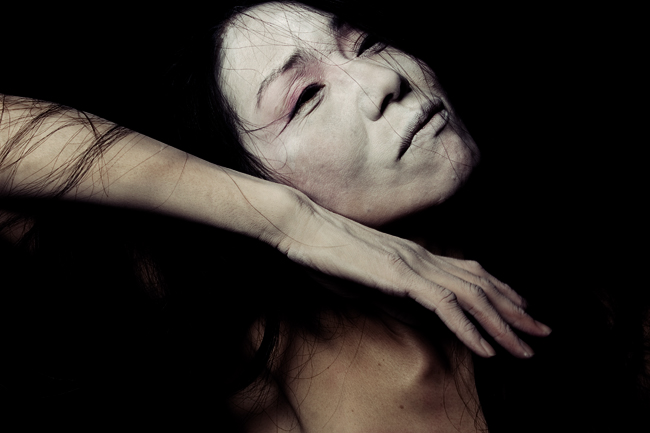
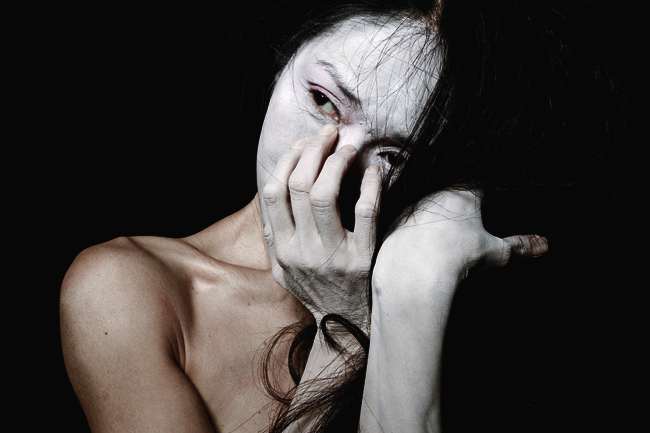
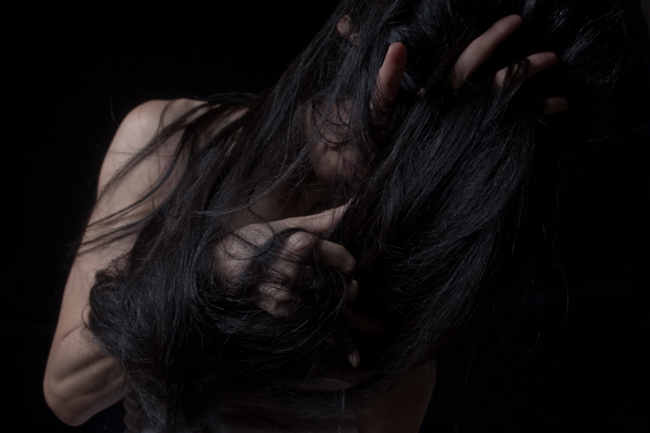
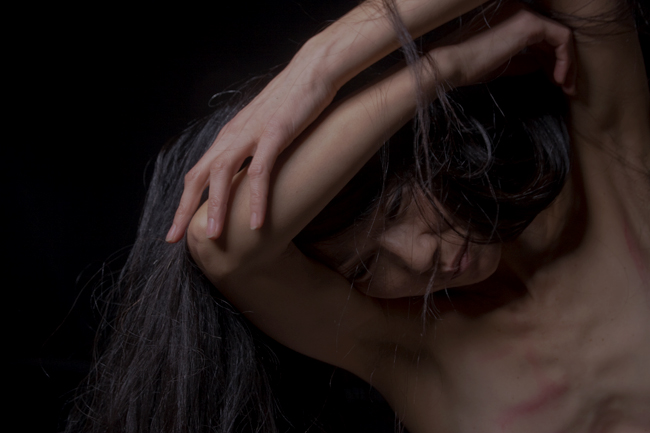
Minako Seki © Esther Suave.
Identifying The Self & Depoliticizing The Body
An Explorative Identity
With the body vacant of design and the full spectrum of emotions accessible by the moment’s instinct, Butoh dancers are met with the challenge of identity. The experience of identity within Butoh is astonishingly elastic. Stories of evolution especially find apt expression in Butoh, as their metaphysics fit perfectly with the continuous discovery of the dancer’s self through body. Nowhere else is this self-recognition more exceptionally reflected than in the volume of Sayoko Onishi’s remembering of animal body memory in Animal Science, or in Imre Thormann’s glorious evolution at the Hiyoshi Taisha Shrine.
Kazuo Ohno was one of the core founders of Butoh in the 1960s, with Tatsumi Hijikata. To watch many of Ohno’s performances is to witness a man discovering his most repressed qualities: those of innocence and naïveté, of grace and romanticism, timidity and gentleness. Ohno often channeled this energy into his dance by “becoming” a woman through his use of props and costume, rather than simply imitating her. His legacy is kept alive today by his son Yoshito Ohno, who is also a choreographer, and the many Butoh dancers who have learned directly from him or been inspired by his spirit.
Even if a character is predetermined, the Butoh dancer will often experience several cathartic encounters of self through their experience of body — almost infantile, as though this self is entirely unfamiliar. It is through the deep connection with the body’s physicality and range of movements that accidental gesture creates character. It is unwritten character from chaos. Within this ecstatic madness, the relinquishment of control does not always mean the surrender of particular identity. The embodiment of a concrete identity can be enabled through conscious use of costume and props, the potential of which may surprise audiences accustomed to seeing only the naked Butoh dancer. The objects’ symbolism must come from a dancer’s deeply personal connection to their presence: with minimalism as the most expressive aesthetic, everything must serve a purpose.
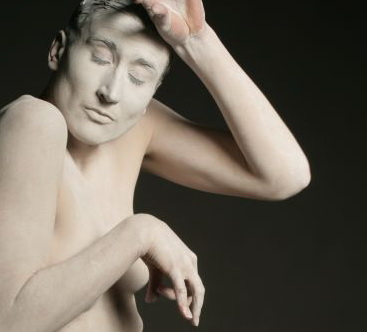
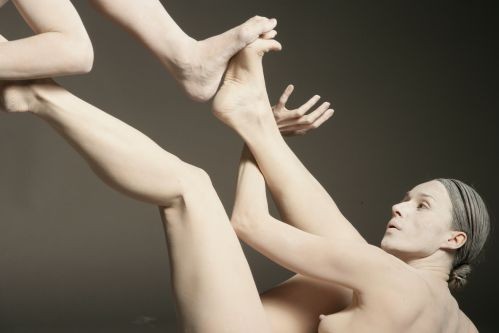
Simon Orinska © J. Deinats.
Nakedness & Body Politics
We have been violently purged from our bodies–displaced by socially constructed egos or else exaggerated as capital. The further our bodies are from our selves, the poorer are our lived expressions through them. We forget what it truly means to dance in every moment of our lives, the significance of which was so celebrated by Kazuo Ohno. However apolitical Butoh may appear to be, it is unavoidably a language of deeply ingrained personal politics. By enabling the reclamation of body and, in the process, repossession of identity, Butoh creates immense opportunity to engage dance as an active form of liberation from social ritual and body governance.
No matter what sophisticated costume may command our attention, it is inevitably the naked Butoh dancer whom we never forget. At any time, nakedness can either enable invisibility or become a vessel of purpose, its visceral power confronting socially-accepted confines of the body — and not just within dance. Butoh can communicate the law of body which has been deemed pornographic: sexuality, eroticism and repressed desire. Let us never forget the core of Butoh’s origins as a form of rebellion, and the legacy of Tatsumi Hijikata’s provocative performance — a physicality that respected the wild expression of the body without any repressive cast of form.
It is only natural, then, for Butoh to also express the transcendence of gender, or enable dancers to explore the delineations of genders within their own bodies and definitions. For a Butoh dancer, the symbolic weight of a transgender costume is not of theatrical impersonation, but of an authentic embodiment. In Butoh, a man may wear a dress so that he becomes more conscious of his movements, while a woman will perform naked to desexualize her body. That is not to say that Butoh is a kind of utopia manifest in the form of dance. To assume so would be to underestimate the power of social prejudices that lie beneath our individual understandings of body and the significance we place upon particular forms of its expression. U.K.-based Butoh dancer Marie-Gabrielle Rotie rightfully points out that even Butoh maintains a certain ideal– the ideal of a white and slender body. Whether as audiences or as dancers, we must always be willing to question our reasons and our interpretations, as well as those of the dancer.
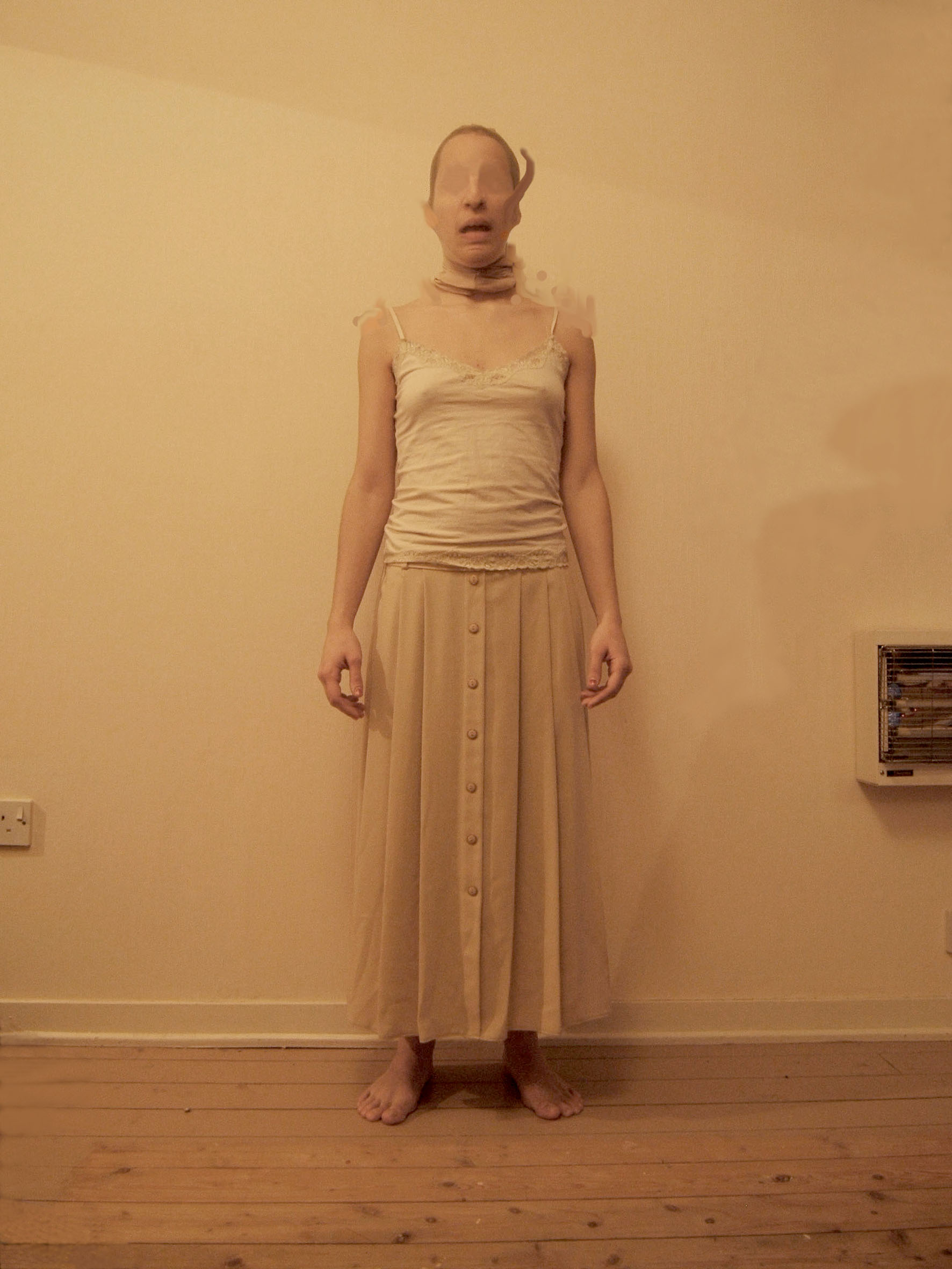
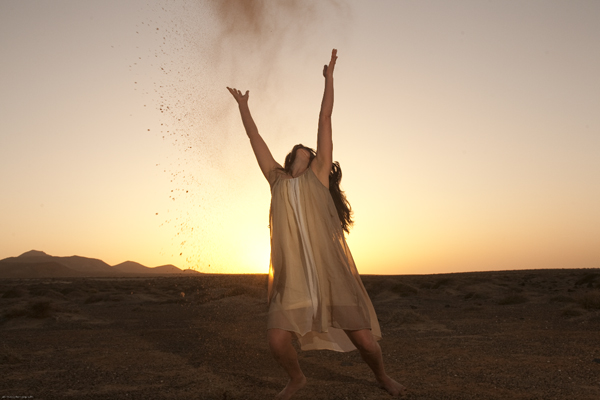
Florencia Guerberof (on left) and Marie-Gabrielle Rotie (on right).
Highlight Question
In your experience, does Butoh allow for a more experimental or honest expression of gender?
“Butoh is mainly about transformation; about embracing different energies — human, animal, animate and inanimate. Through Butoh dance, I discovered the man inside of me. It was quite a fascinating discovery. I enjoy creating female characters that are not purely delicate and ethereal but rather corporeal and strong.” – Florencia Guerberof (London-based Argentinian Butoh dancer)
“… It is a forum where the full range of gender experience, including non-gender, can be revealed irrespective of the sex of the performer. I find a feminine quality of Butoh arises through focusing on the felt sense of our emotional, physical and energetic body, as opposed to other body- and time-based performing arts that focus primarily on the mental ideas and transmitting fixed stories about what’s being impersonated, expressed or presented.” – Maureen Freehill (Seattle-based Butoh dancer, Artistic Director of “Butopia”)
“Butoh plays with gender and can be very liberating. It can also be quite oppressive, as it seems to me that one of the unfortunate developments is that the glorification of the androgynous body has led to a restrictive and rather male-orientated body image for Butoh dancers. So many images seem to promote the skinny, muscular, hair-free male.” – Marie-Gabrielle Rotie (London-based Butoh dancer, Butoh workshop director)
Butoh Dancer Spotlight: Simona Orinska (Latvia)
“I always believed in what Pina Bausch said: “I am interested in what moves people, not how they move.” My first meeting with Butoh was through local, Latvian nonverbal movement or physical theater, and later I visited some workshop in Germany.
I believe in a Jungian approach which states that all humanity has different layers of subconscious or archetypes. The most deep is collective subconscious, which is common for all. Then comes individual subconscious. In terms of nation, individual culture, theater traditions — it can influence the form of Butoh.”
In what ways do you believe that Butoh allows a dancer to explore the subconscious through their body? How do you believe the spiritual experience may be discovered and expressed through Butoh?
Butoh’s inner technique allows to connect with subconscious, which is a very rich source of creativity. But it is only the first step… physical and physiical energy are [also] involved in the act of creation which we know as Butoh magic. Through this, we can touch spiritual experience.
What are some differences in reception or interpretations of Butoh, whether from dancers or audiences, in various countries? Have you noticed particular trends in the way Butoh is interpreted in one country from another?
It is difficult to answer… I think the difference comes from the public’s and dancers’ attitude to more abstract, nonverbal art forms. For instance, in Latvia there are very strong roots of national dramatic theater which is totally different from nonverbal, visual theater performance. In Japan, visual understanding is very common, and it helps to understand Butoh dance in details.

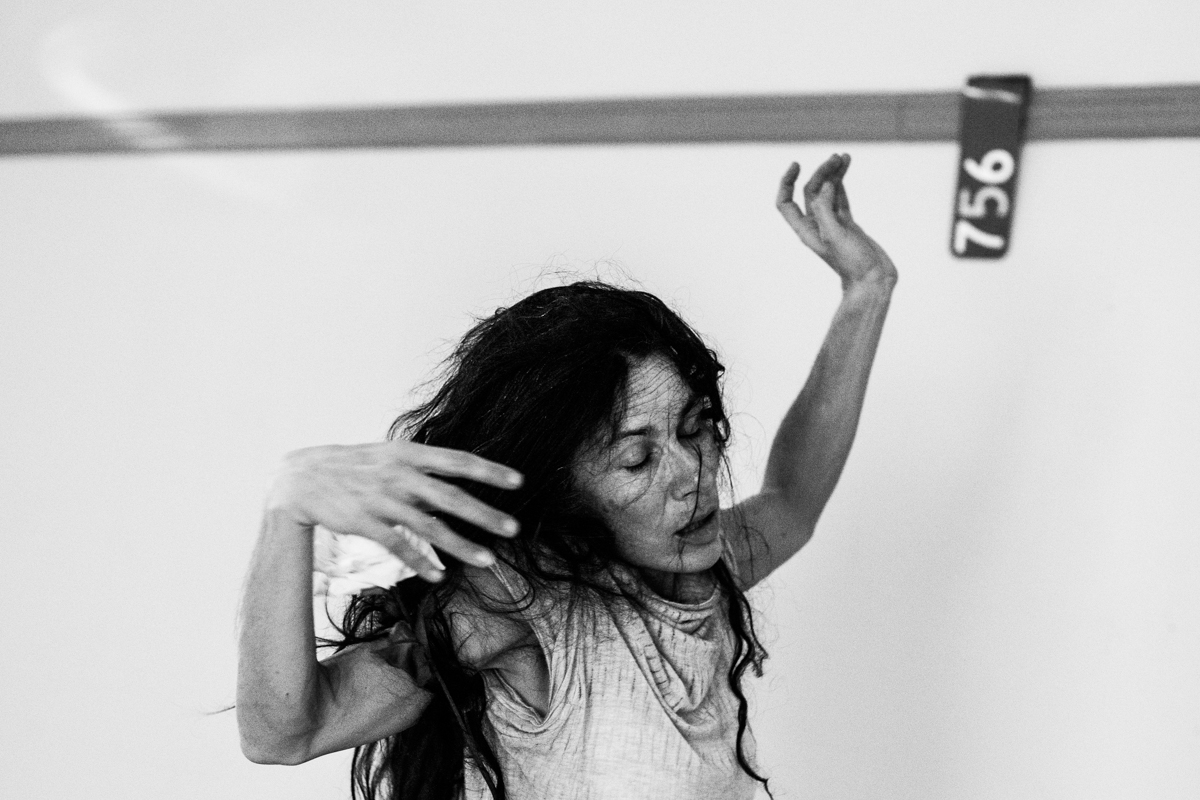

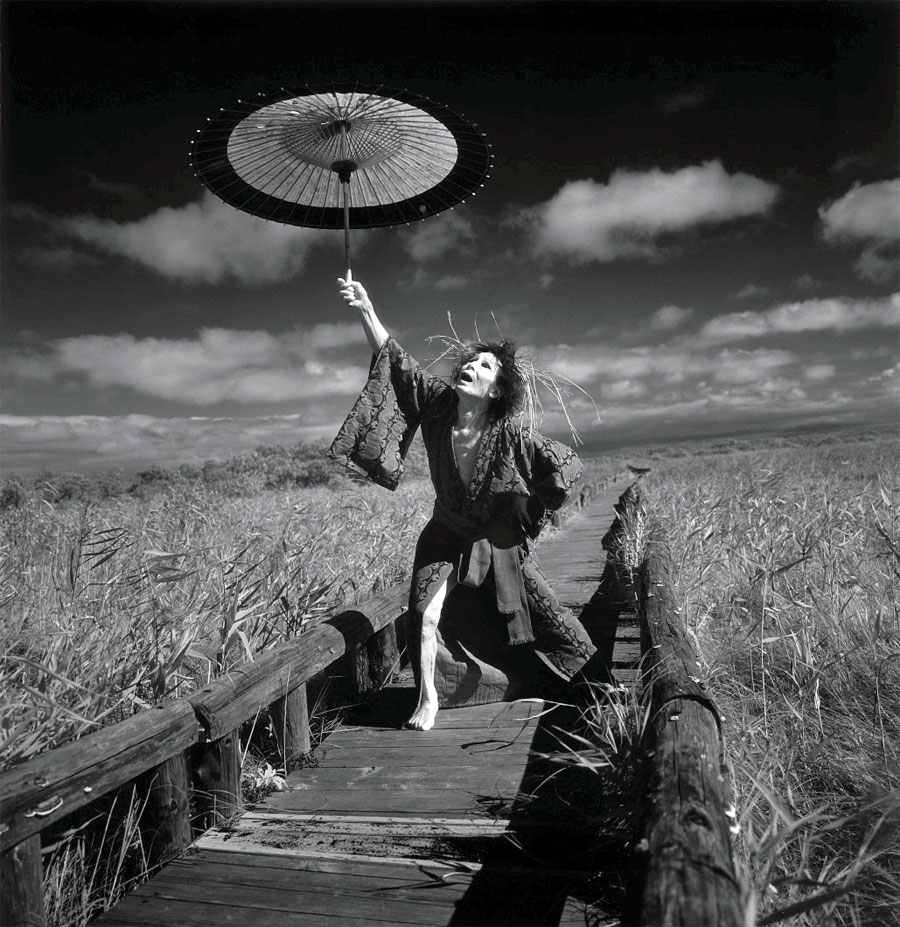






[…] Butoh Dancing (舞踏): Discovering Emptiness, Embodiment & Environment in an Archeology of Body: http://www.redefinemag.com/2013/international-butoh-dancing-emptiness-embodiment-environment-archeol… […]
Hi Yan, Thank you so much for your kind words 🙂 Glad you enjoyed the article!
Even if I was not honored to be interviewed by you in this article, I would still be very impressed with your research and perspective Lital. Thank you for your careful and thorough attention to this important art of our times. Hopefully it will inspire people to attend a performance or workshop themselves as that is really the definitive way for this art to be experienced — directly through the body in real time + space.
[…] ARTICLE: BUTOH DANCING (舞踏): DISCOVERING EMPTINESS, EMBODIMENT & ENVIRONMENT IN AN ARCHAEOLOGY OF BOD… // Redefine […]
[…] Discovering Emptiness, Embodiment & Environment in an Archeology of Body’. Available at: http://www.redefinemag.com/2013/international-butoh-dancing-emptiness-embodiment-environment-archeol… (Accessed: 12 June […]